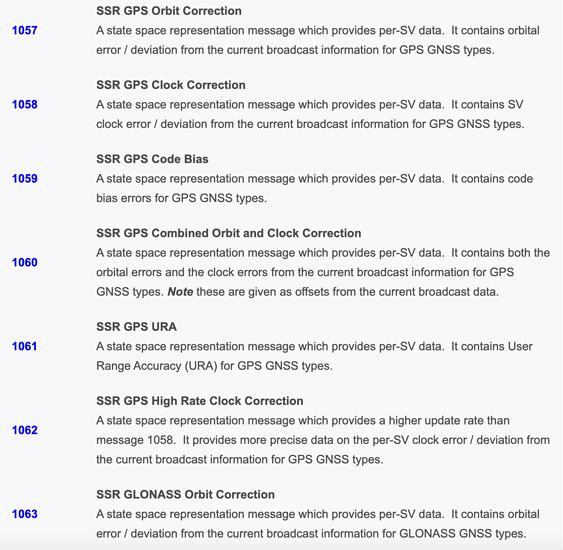Hi,
Dear colleagues, I have some doubts.
I would like to understand in practice and in theory the difference between the methods:
→ Ntrip
→ Network RTK
→ RTPPP
I’ll take a stab.
NTRIP is a protocol and is used to connect to a corrections source. It can be over cellular data to a network of CORS or a local network.
PPK is when logs are retrieved from both the rover/drone and the base/CORS and then processed against each other to obtain post-session corrections.
PPP is similar to PPK but uses a special service and negotiates with a global network of CORS.
Another method is LoRa. Long range radio (what the rubber antenna are for) transmits the corrections from the local base directly to the rover/drone. It is the most accurate until it’s not due to the obvious restrictions with skyview and ground obstructions but if you have line-of-sight it’s great. No data required.
NTRIP : A communication protocol or standard . (What Is NTRIP and How to Use It for RTK with Reach - Emlid)
Network RTK : A generic term for RTK workflow. Can use NTRIP, LoRa, or any other means to provide real-time corrections from a base to a rover(s).
RTPPP : Same as PPP (How PPP works | Reach RS/RS+)
Hi Mauricio,
In addition to Michael’s and Dave’s clear answers, I’d give you a more insight into RTPPP.
PPP is a technique that allows achieving centimeter accuracy without base corrections at any point on the Earth. It uses tropospheric and ionospheric corrections, precise ephemeris, clock offsets and signal biases. It usually works in post-processing services like NRCan CSRS-PPP or IBGE, that you’re likely more familiar with since it’s a Brazilian service.
RTPPP is considered as part of PPP technique. “RT” means here real-time, so this corrective information mentioned above is transmitted to the receiver right at the moment. From the user’s side, it works similar to RTK, but requires more time for solution convergence. It’s worth mentioning that it requires a communication channel that may be an IP-based or satellite L-band.
You can come across this technique as “PPP-RTK” in some sources. If you want to find out more about RTPPP, feel free to read these articles: [1] and [2].
Got it.
So is RTPPP using IP the same thing as Ntrip?
As far as I know, IP is used in Trimble RTX. The other services, that I ever heard of, use L-band channel.
Right,
In my mind, everything that relies on sending corrections over IP is Ntrip, as the name implies = Networked Transport of RTCM via Internet Protocol.
Unless patterns other than RTCM are sent.
Am I right?
Is the L-band sending also RTCM?
That’s correct. Just like the rest of the world manufacturers like to have their own proprietary formats and workflows. We had to ask for a special license to use a paid cloud NTRIP service. Almost all of the networks in the United States are Trimble based and their default is RTK. We pay an extra $200 per year to get RTCM compatible with Emlid.
I can’t say for sure how it works with different manufacturers because some of them have their own proprietary messages. But if we talk about SSR corrections mentioned in the articles I’ve shared, they are a part of RTCM messages:

What are the RTPPP services that you know?
IP and SV (L-5 Band) for RTX.
In the case of Trimble’s RTX, it’s IP or L5 (SV frequency) and I believe it’s in a proprietary protocol (CMRx likely).
This topic was automatically closed 100 days after the last reply. New replies are no longer allowed.




